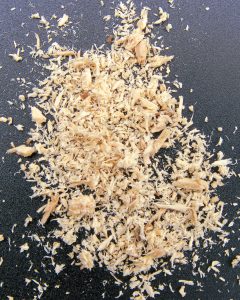Microcrystalline Cellulose is very commonly used to make various forms of pills and medication, being part of the “structure” of a capsule or solid oral dose. That being the case, it is typically more of a “functional” ingredient than one that changes the nutritional makeup of an item.
Every now and then, the rumor that “wood pulp” is used in food becomes popular on the Internet and in the news media. When people refer to “wood pulp” in this way, what they are actually talking about is microcrystalline cellulose, which can actually have positive health benefits.
 Microcrystalline cellulose is, indeed, a refined wood pulp. However, it’s important to understand that is not industrial waste from a lumber operation or anything that alarmists might claim. In fact, microcrystalline cellulose has been used in food for many decades already.
Microcrystalline cellulose is, indeed, a refined wood pulp. However, it’s important to understand that is not industrial waste from a lumber operation or anything that alarmists might claim. In fact, microcrystalline cellulose has been used in food for many decades already.
Microcrystalline cellulose is added to a wide range of different food stuff, and most frequently appears in baked goods such as cookies. It can be used in virtually any kind of packaged food and is even added to meat products at many restaurants.
It has a wide variety of uses, many of which are related to avoiding unhealthy cuisine:
As plant matter, microcrystalline cellulose provides a relatively large amount of fiber by weight. That being the case, it can actually help with digestion. In terms of its nutritional contribution, it is practically inert in most foods: Instead, it serves as a “base” for other nutrients and minerals.
Microcrystalline cellulose is very commonly used to make various forms of pills and medication, being part of the “structure” of a capsule or solid oral dose. That being the case, it is typically more of a “functional” ingredient than one that changes the nutritional makeup of an item.
Microcrystalline cellulose is in wide usage around the world. Thus, people have little to worry about from “wood pulp” in their food.